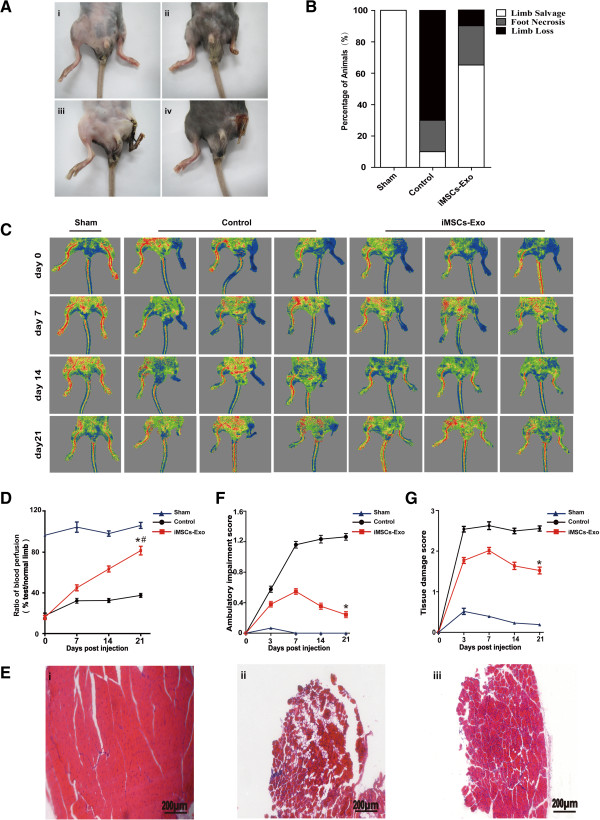Figure 2.

Transplantation of iMSCs-Exo improved blood flow and attenuated hind-limb ischemia. (A) Examples of the potential clinical outcomes after femoral artery excision: no necrosis (i), necrosis of the phalanges (ii), necrosis above the ankle joint (iii), and complete necrosis of the limb (iv). (B) At day 21 post-injection, the 3-group comparison showed a significant difference in the physiological status of the ischemic limb rated in three levels: limb salvage, foot necrosis, and limb loss (n = 20 per group). (C) Laser Doppler flow imaging showed dynamic changes in blood perfusion in limb ischemia of the 3-group at days 0, 7, 14, and 21 post-injection. (D) The ratio of blood flow in the left limb (ischemic) to right limb (non-ischemic) was gradually recovered in iMSCs-Exo transplanted mice at day 21 (# P <0.05, day 0 versus 21); compared with the control group, there was significantly improvement in the ratio of blood flow at day 21 (*P <0.05, iMSCs-Exo group versus control group). (E) At day 21 post-injection, hematoxylin-and-eosin staining for ischemic muscle showed that muscle had structural integrity in the sham group (i), whereas in the control group, muscle had massive degeneration (ii); however, in the iMSCs-Exo group, muscle degeneration of the ischemic limb was largely protected (iii). (F, G) In the iMSCs-Exo group, compared with the control group, the scores of ambulatory impairment and tissue damage were significantly decreased at day 21 (*P <0.05, iMSCs-Exo group versus control group). iMSCs-Exo, exosomes derived from induced pluripotent stem cell-derived mesenchymal stem cells.
